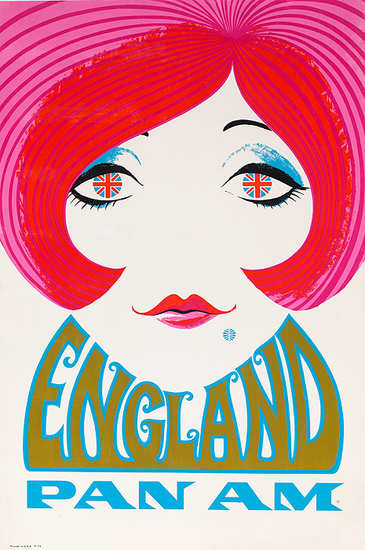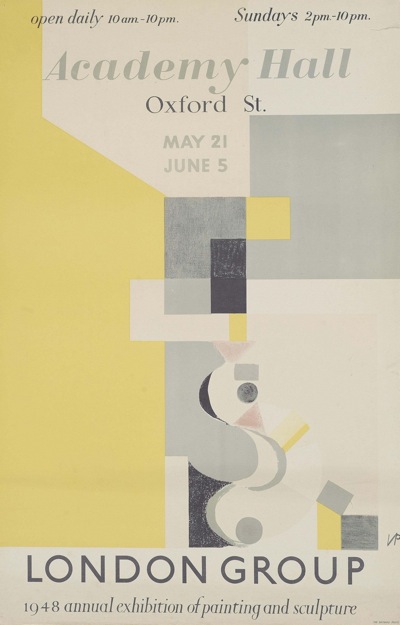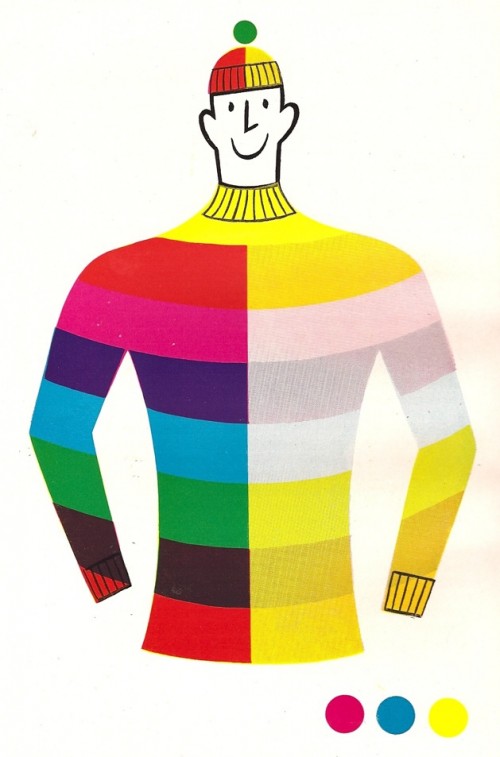Following on from the comments on my last piece about the inexplicable gap between eBay prices and elsewhere, a couple of instructive compare and contrasts for you.
Firstly, this excellent piece of sixties-iana, about which I know nothing except the rather obvious fact that it is for Pan Am.
Oh, and that its current asking price is $3,250. If you’re tempted, it’s in an online exhibition of travel posters held by the International Vintage Poster Dealers Association. I am not, you will be unsurprised to learn, a member.
However, if you are more of a fan of the poster than the price, then you can rue your missed opportunity, because it did turn up on eBay at the end of last year, where it fetched just $384.99.
Example two we have seen only the other day, as it’s Victor Pasmore’s exhibition poster which is up at Christies next month.
This too came up on eBay only about six weeks ago, when it went for just £125. In case you need reminding, the Christies estimate is £600-800.
Now I know that price can depend on condition, but even so the discrepancies are huge. And given that both these posters are fairly rare (I have never ever seen either of them before now), the odds must be quite good that it’s the same poster being sold on.
One more example, although in this case the price discrepancy is partly explained by the fact that the original listing is in German. Tom Eckersley’s book on Poster Design, the source of this wonderful illustration.
Now the last time this went past on eBay, the asking price £75, give or take a penny. But the lucky purchaser in the German auction got it for just one euro. And you can’t really blame that on the whole thing being written in foreign, because it did say ‘Tom Eckersley’ very clearly in the title.
So, eBay: an enigma and a mystery. And probably also quite a good business model if you’re interested in buying cheap and selling expensive. Any economists out there with any more interpretations?
While we’re on the subject of Tom Eckersley, another way round high auction prices is available. The V&A are selling reproductions of his Keep Britain Tidy Poster as part of the merchandising for their Modern British Design show.
Which I suppose may mean that there is an Eckersley poster in there somewhere, along with everything else. I really ought to go and see that and we are going to London in a few weeks time. But given that we are already planning to subject small Crownfolio to the Jeremy Deller exhibition, the V&A might be a step too far for one day. Perhap we’ll go and see the dinosaurs instead.




re eBay, why not buy yourself a real Lowry? They’re only £100-£200 each on eBay – even for an oil; how can Christies justify charging hundreds of thousands – or even millions – for one.
http://www.ebay.co.uk/itm/Framed-Oil-Painting-Signed-L-S-Lowry-/280835989821?pt=UK_art_Paintings_GL&hash=item416321213d#ht_7932wt_1185
Yet it doesn’t stop some people from paying thousands for remarkably similar-looking specimens.
http://www.ebay.co.uk/itm/L-S-LOWRY-OIL-PAINTING-DATED-1931-/251013557622?pt=UK_art_Paintings_GL&hash=item3a7192ed76#ht_500wt_1202
Buying things on eBay is probably an easier way to lose money than to make it… if you’re buying from Christies you have some sort of guarantee of authenticity.
To be fair, neither seller claiming them as originals although I have no doubt that people will sell them on as one – and in the second case a few people certainly believed it was real. Interesting story, I’d like to know more!
We’ve made a couple of errors in eBay buying – getting a repro not a real one for our pennies – but in most cases the amounts of money involved had been so small that we’ve never gone back and complained to the sellers. And, overall, I think we’re winners rather than losers over eBay. People mis-describing things can lead to some good bargains…